The smart house is the most popular form of IoT. It is a hot trend for inventors, developers, writers, and regular people. However, a smart house is the only first step into the era of IoT. Today we are going to tell you about one great and appealing case – “the smart estate.”
Can you imagine that your estate of any size lives in the smartphone? Rather fantastic? Well, this is an original IoT application.
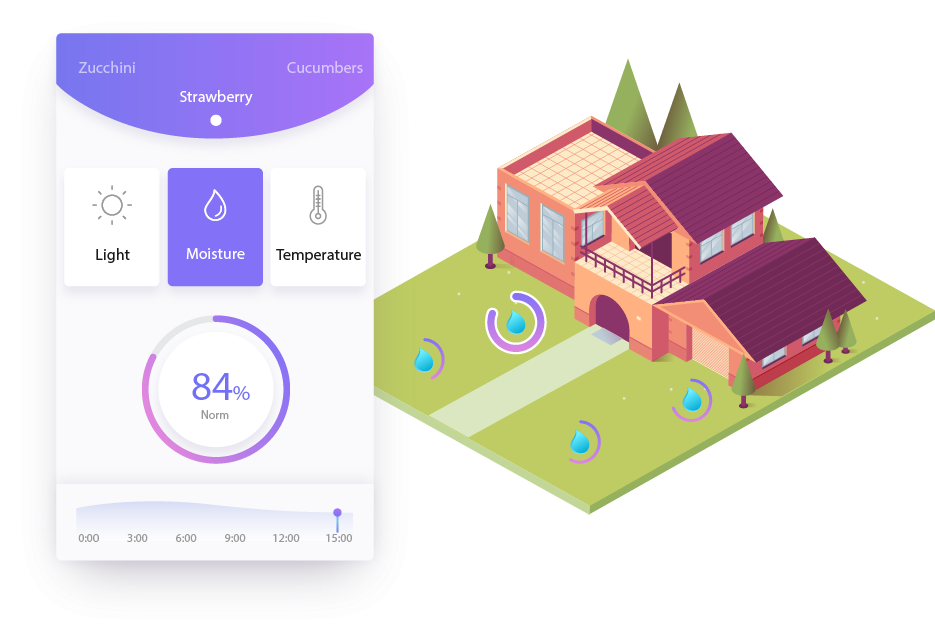
The client – a normal human who owns a good-size piece of land, lots of plants, and wants to automate an irrigation process.
The client’s pain – the territory on which the estate is located has a complex, hilly relief. When irrigating, all the water flows into the ditches, and the areas on the hill remain dry and weathered. In different parts of the area, there are the plants which need different conditions of soil moisture, and the whole system demands a lot of effort for watering.
The aim of the project – to create an automated irrigation system without any human intervention, and allow the owner to monitor the status of his estate remotely.
The problem solution – “the smart cottage.” We provided the client with the solution to create a smart estate: to place humidity sensors, link them together via the Internet, and program them to indicate periodic moisture measurements. All data will be uploaded to the cloud. Moreover, we need to organize data processing, connect to the data centre an existing irrigation system, and work out the visualization for the client.
1. Integrating the computer in the lamp
We place the module with the controller mega2560 in the garden lamps PL257 Feron which work on solar batteries. This is a microcontroller with an integrated Wi-Fi adapter that can be programmed to collect and send information.
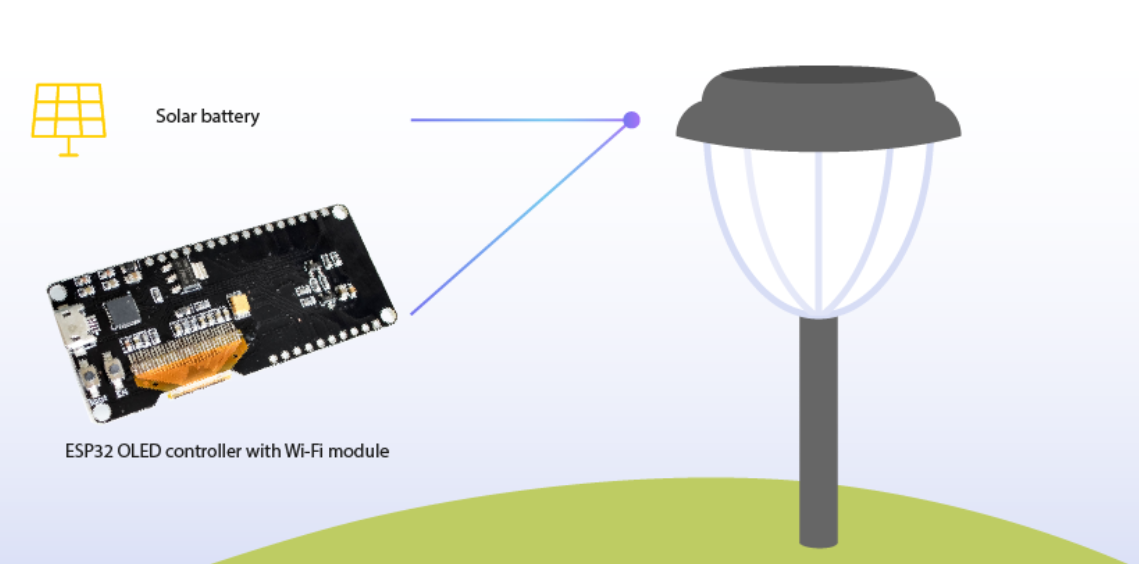
2. Building sensors into the lamps
We transform the lanterns into a “remote collection data point” – we add ground humidity, light and temperature sensors.
*Three humidity sensors are placed in each lamp, taking an average indicator (a coefficient of 0.33 is assigned to each sensor). If only two sensors provide measurements, the third one shows 0 – the coefficient for two proper sensors will be 0.5. The owner will receive a notification about the failure of one of the sensors. This will allow the collection data centre to function until the faulty sensor is replaced fully.
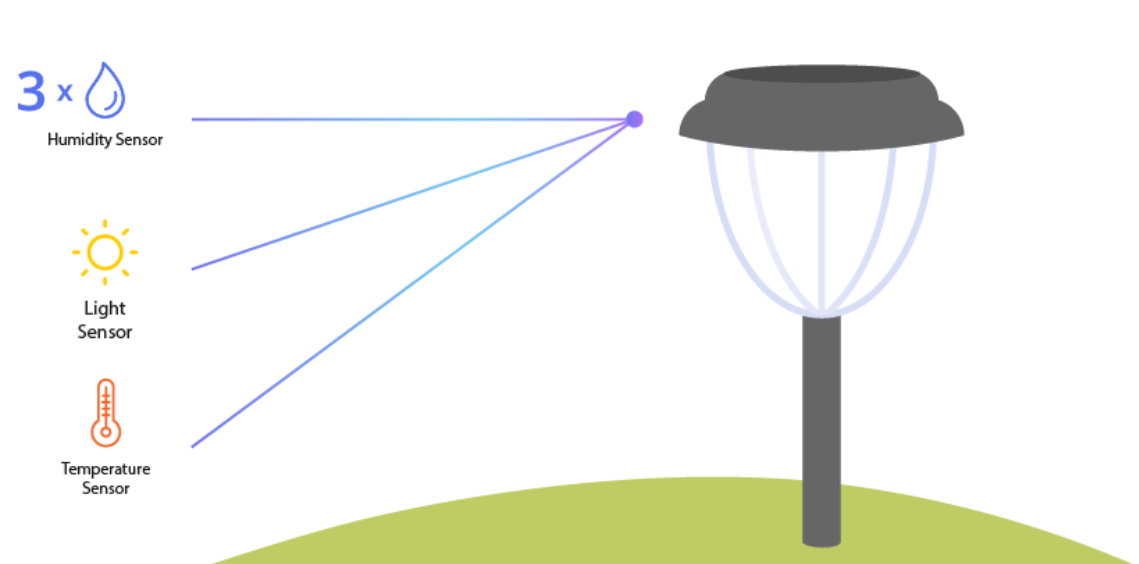
3. Programming of the “Internet lamp”
The lamp is assigned an algorithm (scheme below). It is continuously charged from the solar battery. Thanks to such economic use, the lamp is entirely autonomous and does not require additional batteries.

4. Working-out the indicator rates, scenarios, and conditions
At this stage, we organize the workflow of the information processing centre, based on the Firebird 2.1 DBMS, or on Orange Pi2, using Perl, and MySQL.
The main scenario is about to get the information about the ground humidity from the sensors at remote collection data points, process this information and assign a percentage of humidity from 0 to 100%. And further, depending on the result, there is “if” condition:
 |
 |
 |
 |
| if the humidity level is below average, the irrigation system is activated |
if average – the session ends before the next scheduled measurement |
if the watering is turned on and during the next measurement session the indicator hasn’t risen, an error occurs, and the notification is sent |
if the result is 0, then watering is not included, but an error is sent to the owner |
At the beginning of irrigation, the humidity of the earth rises to 100%, and so that the irrigation does not immediately turn off – an integral chain is involved in the program. The program calculates how much time it is necessary to water, so that in the end the moisture level corresponds to the norm.
* Due to the fact that you can place as many remote collection points as you like, and at any distance, you can create a sketch of the area and set different humidity indicators for different zones.
5. Connecting the irrigation system
The shut-off valves of the irrigation system are connected to the data processing centre. They can turn on\off the watering with the system notification.
The complete scheme of the smart cottage workflow:
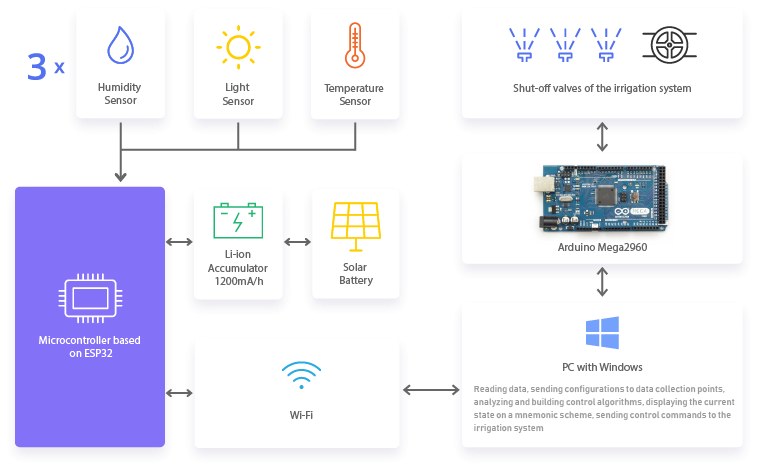
6. Designing of the visualization model for the client
On this stage designers start to work on the project; in the first version, the visualization of a smart estate is done in Delphi, for Windows PC. In Evergreen we develop visualization on the Web, and it is accessible from any gadget or even via an instant messenger (Viber, Telegram, Facebook, Skype). This feature will enable the client to monitor the status of his estate at any time.
We can draw a scheme of the estate with any complexity, assigning each zone its humidity rate. By clicking, the window is displayed with average sensor indicators in this area.
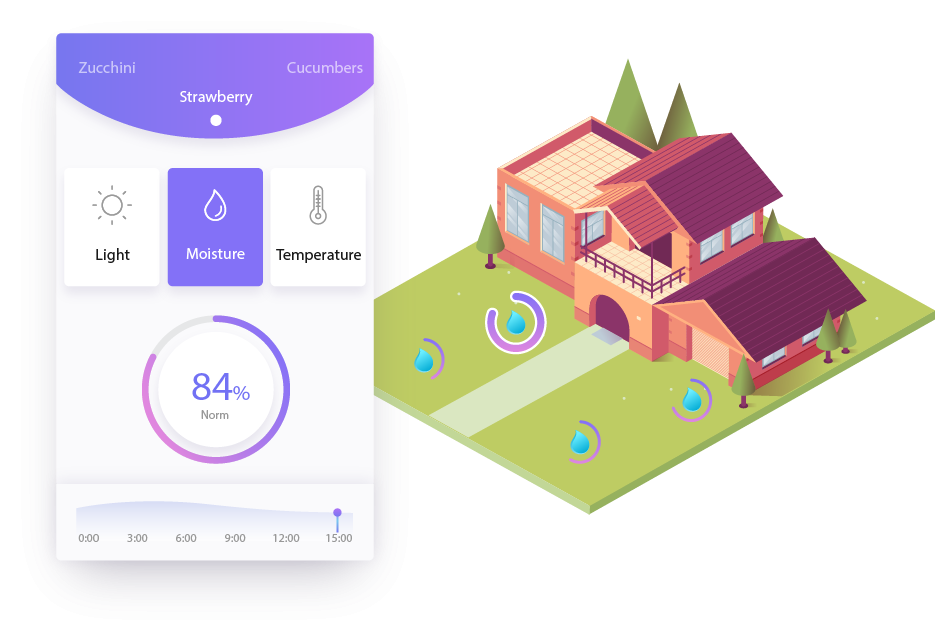
Results
We have presented you a real case of the smart estate with a remote control system, considering different weather conditions, various requirements for plant growth. Internet of things gives an opportunity to control any of your assets even being on the other side of the world.
Moreover, the solution is easily scalable and can be applied for business issues, personal use both for a small area or whole fields.
Description prepared by Elizaveta Kudelya, Evergreen journalist
Case automation Vyacheslav Tsyba
29.12.2018
The images used in this article are taken from open sources and are used as illustrations.




.png)









